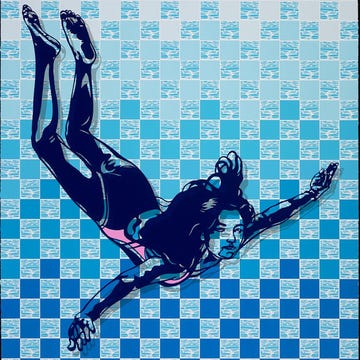The call came in at 3 p.m. My wife and I were in Naples, our final vacation day in Italy. We had planned this trip for 12 months; we had prepared and we had saved and, up until that moment, we had enjoyed it very much. Part of the preparation involved our dog, Milo, a 16-year-old bichon mix who had become, if not exactly frail, then brittle, while still remaining essentially himself. We’d asked a friend whom Milo loved to be our house- and dogsitter. Now she was calling, and as I calculated the hours—it was 6 a.m. on a Sunday in Los Angeles—I knew something had to be wrong.
This essay was adapted from the Alta Weekly Newsletter, delivered every Thursday. To keep reading, become an Alta Journal member for as little as $3 a month.
SIGN UP
Milo, our friend reported, could not stand. He was disoriented and didn’t seem to know where he was. My wife gave our friend the name of the veterinary hospital. She said she’d call again once she knew more. Seven thousand miles away and nine hours ahead in the timeline, we caught the ferry back across the Bay of Naples to Sorrento, where we were staying, to await news.
I wanted to think it was nothing, but I was worried. A week or so before we’d left, Milo had experienced a similar episode: logy, unable (or unwilling) to walk. Within a couple of days, however, he had rallied, and we’d decided we were fine to leave.
Long ago, we had agreed to eschew extraordinary measures. Milo was an old dog, and we didn’t want him to suffer. Still, when our friend called to put us on with the veterinarian, we found our resolve tested. The dog had a tumor on his spleen and it was bleeding into his abdomen. The cancer appeared to have spread to his lungs. I asked if he was in imminent danger of dying before we returned home.
The vet answered: “He is in imminent danger of dying right now.”
I asked what she would do if he were her dog.
“I’m sorry,” she said. “But I would euthanize.”
“OK,” I told her, voice cracking. “I authorize you to euthanize.”
As we waited for the vet to perform the procedure, our friend set up a videoconference so we could see Milo for the last time. Our daughter joined from the East Coast, and we all cried together and told Milo he was safe and it was OK to go. Just before the end, he sat up and looked into the camera. He had seemed worn-out, lying on a blanket, but now here he was, himself once more. It was as if he were telling us we didn’t need to worry. It was as if he were reminding us of who he’d been.
Then he lay back down and did not move again.
We didn’t even know the injection had been administered until the vet informed us, so seamless (it appeared) was his transition from the living to the dead.
I’m writing euphemistically because there is no good word for how it happened. Euthanasia is such a clinical term, and Milo’s death was anything but that. Rather, it was beautiful, an apt conclusion to a life of love and grace. Our dog had rallied so we could go to Italy. He had held on for days before his body failed. He had lived until he no longer could. Even with his family far away, he faced his death with equanimity.
There’s a model here, I want to suggest, for every one of us, as we confront our own mortality.
I’ve read that the death of a pet is a rehearsal for the death of a person, that it teaches us, in some way, how to mourn. I disagree because that minimizes it, as if our love for an animal is somehow lesser, our grief a kind of rehearsal, which has not been my experience. Let me say it plain: For 16 years, this dog and I were the best of friends, especially as he aged. The two of us were kindred spirits, a pair of old men, stiff when we sat too long, groaning as we’d rise and crack our joints. We shared a private language, in which we conversed daily, modulating our voices in a ragged unison, sharing a kind of keening or lowing, echoing each other in an extended back-and-forth.
I loved him, in other words, but I also liked him, more than most people I know. How, then, could his death be a rehearsal when it feels instead like the most profound form of loss?
Late in his life, I thought increasingly about Milo in terms defined by cherishing. I was careful when I petted him or rubbed his ears. I stepped lightly when I saw him sleeping so he would not be disturbed. In a culture such as this, which fears death and isolates the sick and elderly, living with an aging animal becomes a lesson in compassion, just one of the many lessons Milo offered.
And now there is his death, the dignity with which he faced it. Even in his final moments, Milo was still teaching me.•












